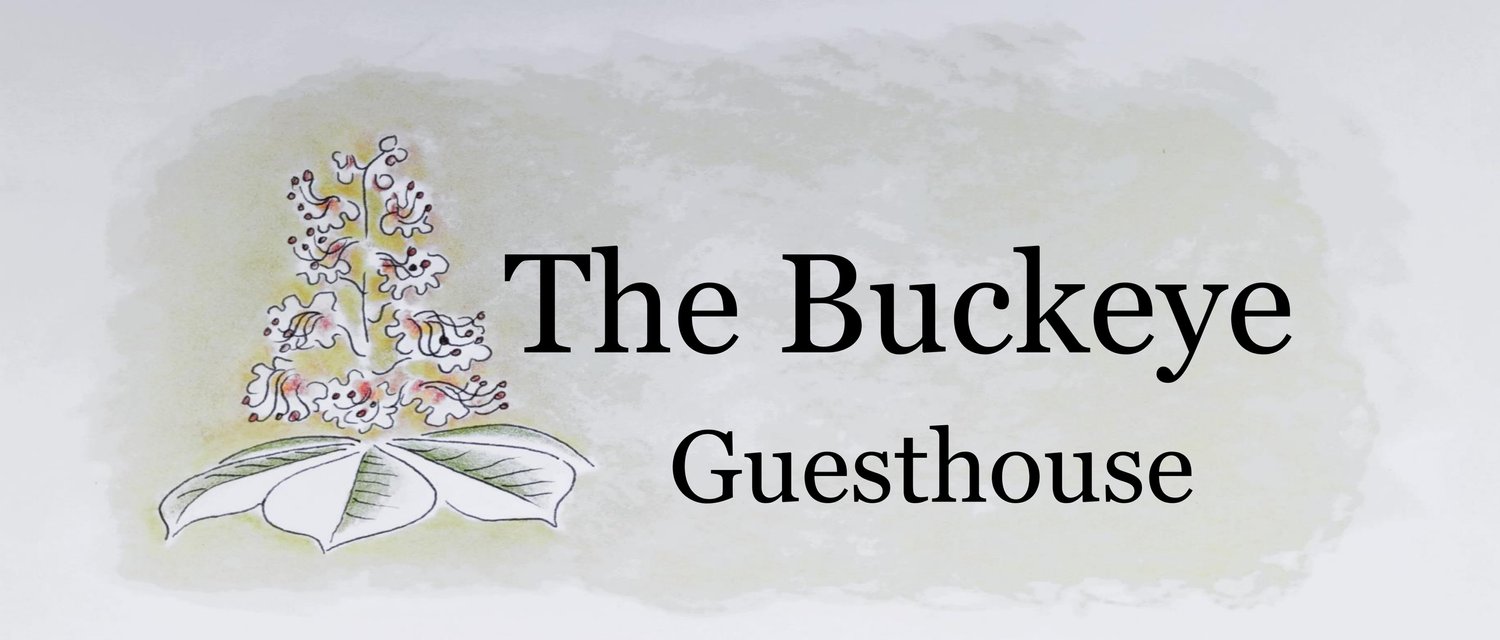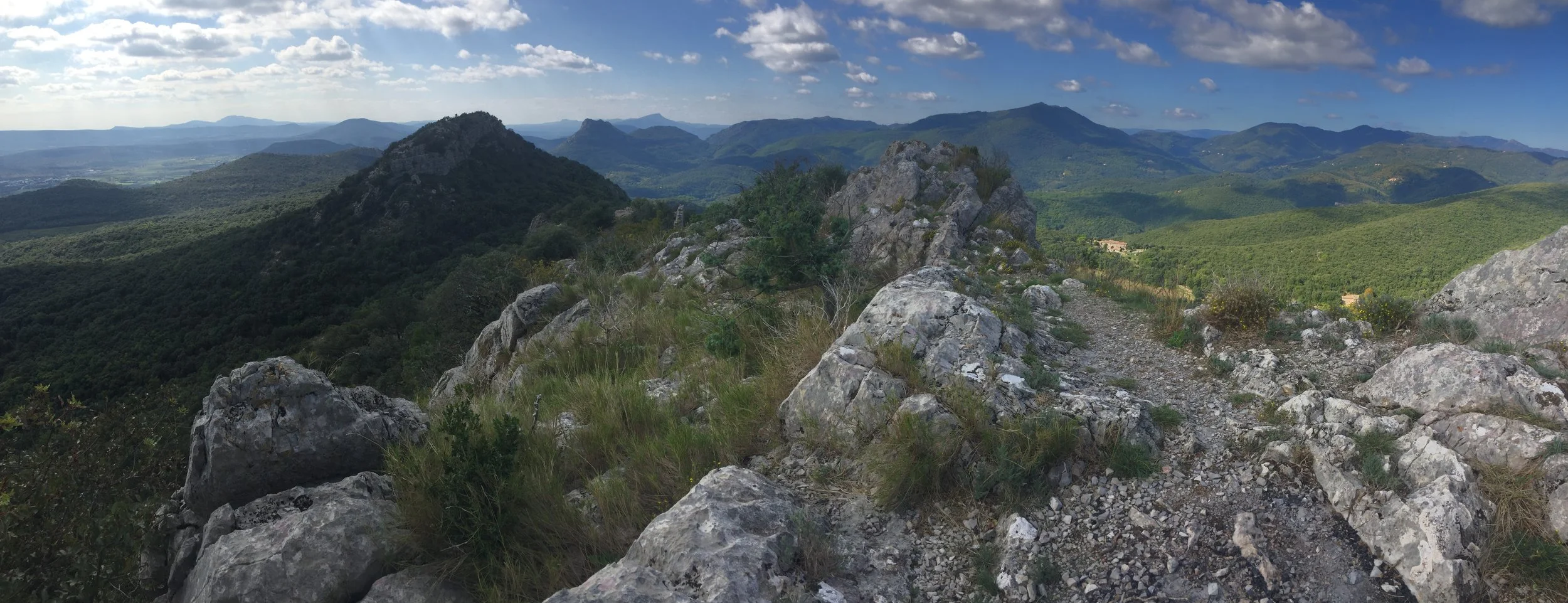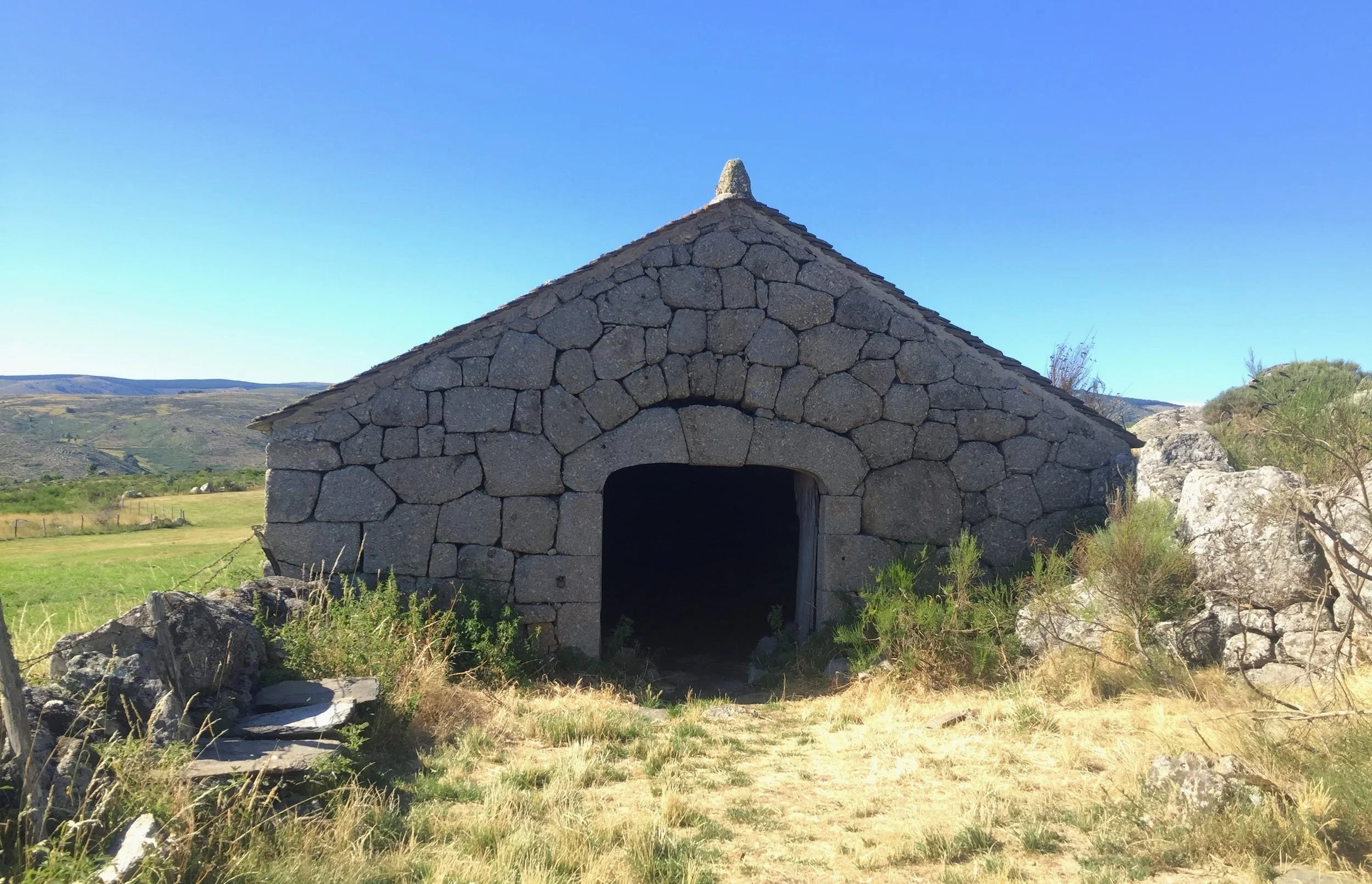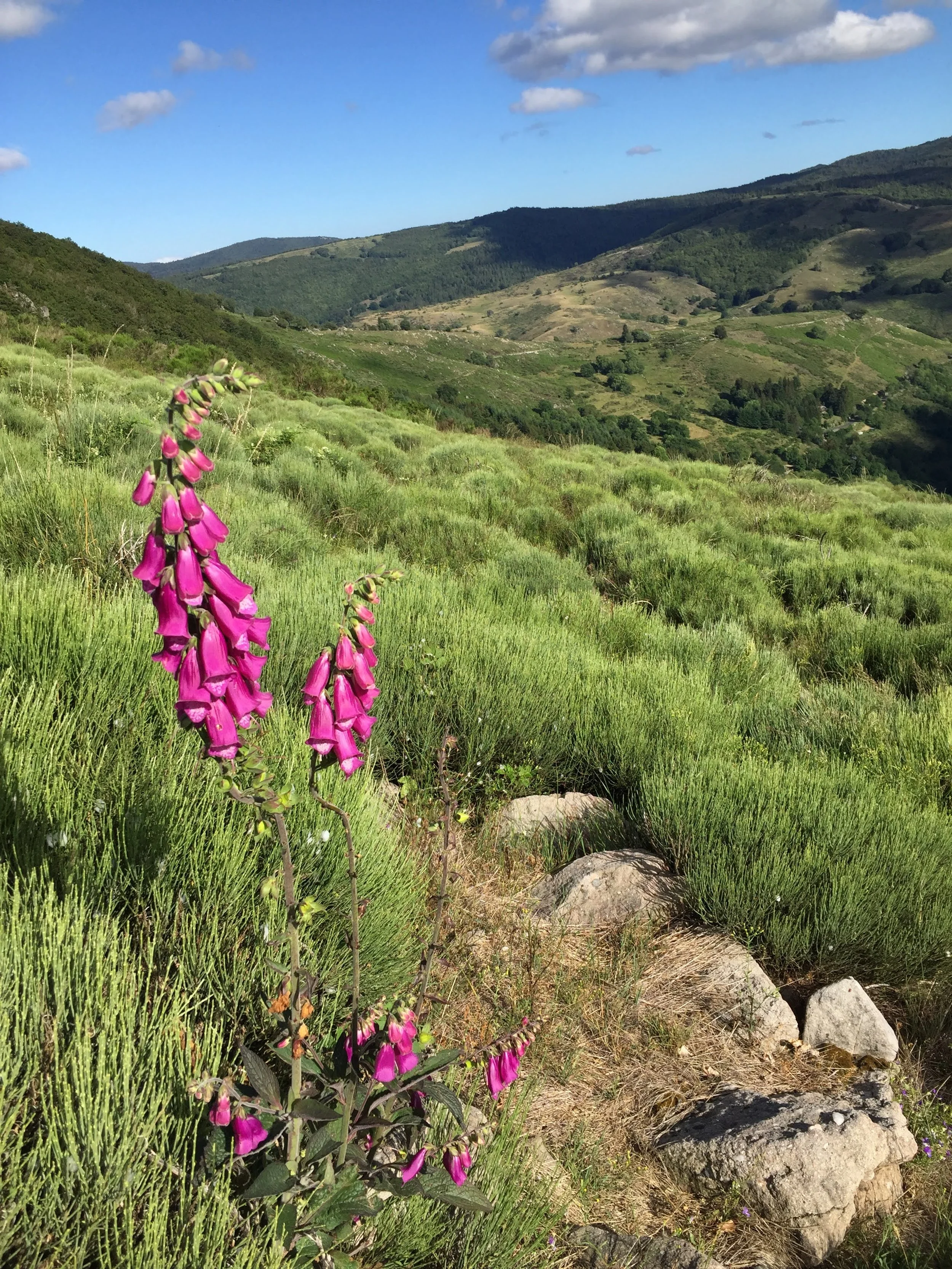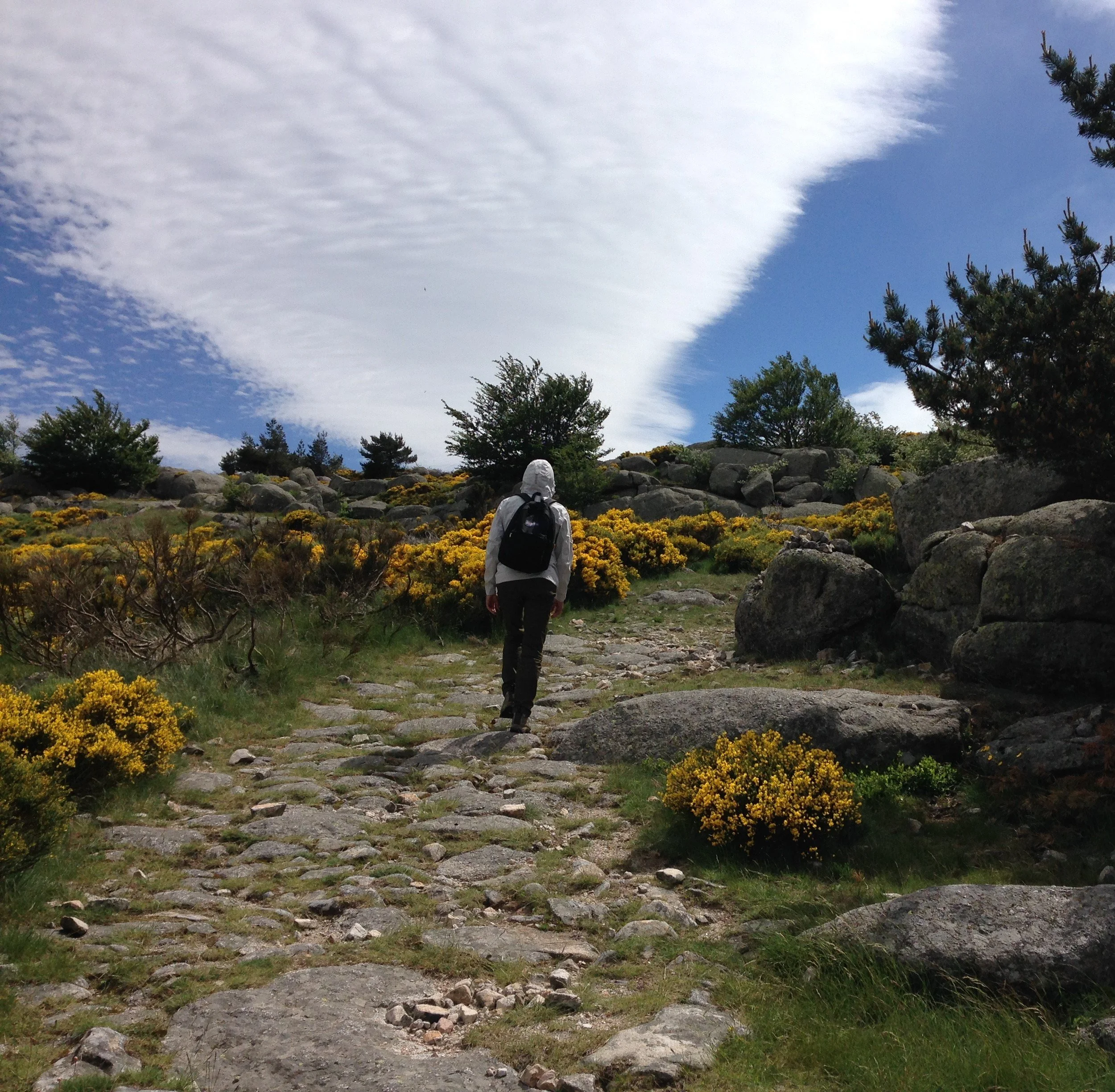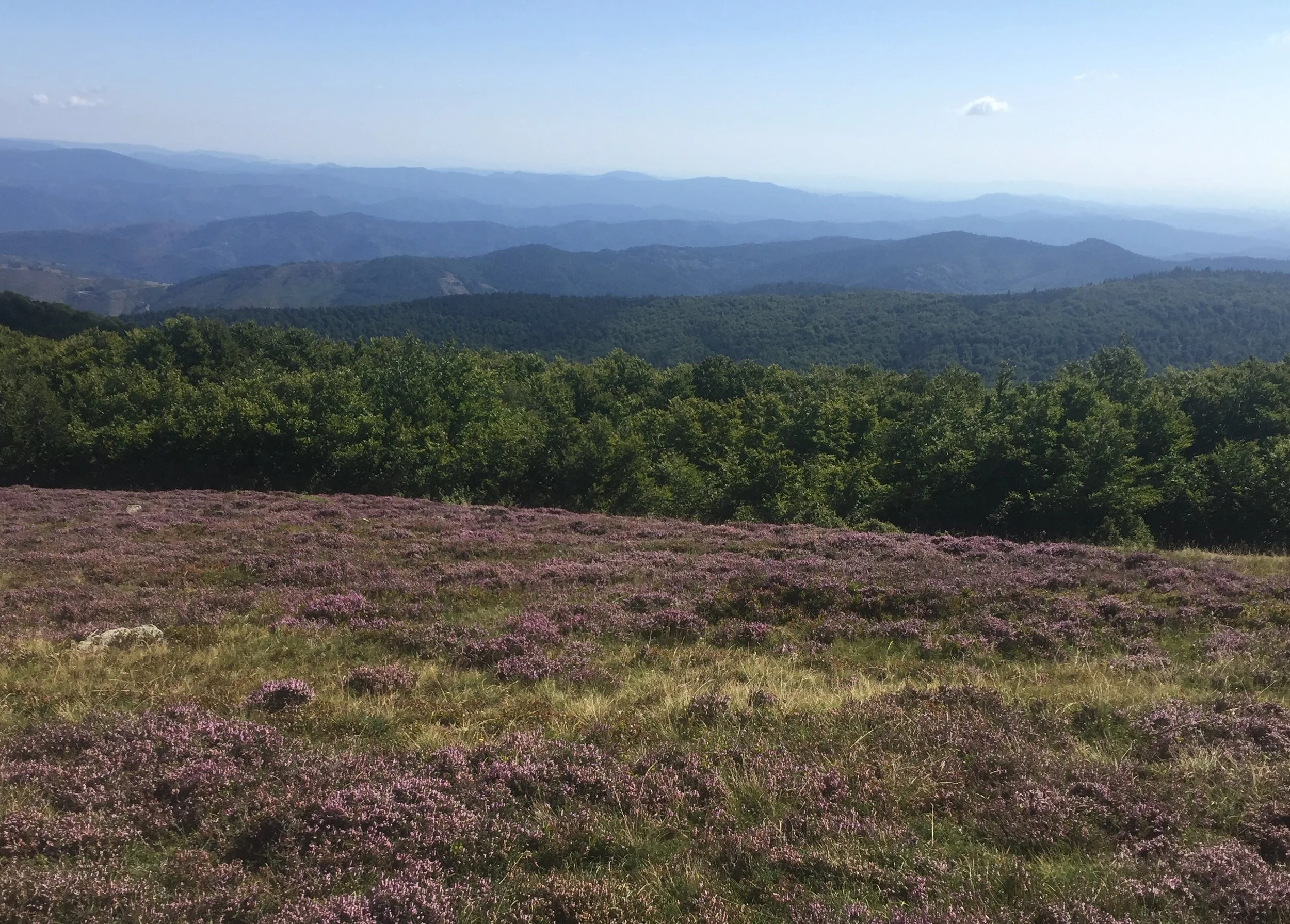
The Cévennes Mountains
It is known as a land of resistance, and a sanctuary for refugees.
There is a lone wolf that has been killing some sheep on the Fageas near here (a mountain called “the Beech”).
The steep valleys hold secret waters in the folds: karstic caverns; gourgas (laid-stone grottos).
rugged
poetic
the bygone is not gone
dreamy
sublime
The forests are a layer cake of natural adaptations and a delightfully varied patchwork of historical forces.
The schists and the granites play a dosey-doe.
The protestants and the catholics took to their corners and killed each other for centuries, their stories echoing in secret forest sanctuaries or hiding places in domestic architecture.
The houses were built by giants who had to duck under the low lintels; and they wore down the stone stairs and cobbles with their sabots (wood clogs).
The National Park has a mission to preserve and restore the agri-pastoral landscape, the natural beauty created in a millennium of humans working with nature, ostensibly symbiotically.
The revenant forest and wild hogs have ravaged the dry-stack walls and strangled many an orchard since the exodus of the troupeaux and the sabot-wearing giants. This creates a romantic landscape of ruins, where ruin-loving, hard-working people come back to the land and start wearing sabots and stone-whispering, breathing new life into remote hamlets.
There are many festivals: like for the transhumance (migration of the flocks), for chestnuts, mushrooms, documentary films, and especially music – we listen to music in wondrous Romanesque churches or castles.
Continue Reading about the Cévennes Mountains
